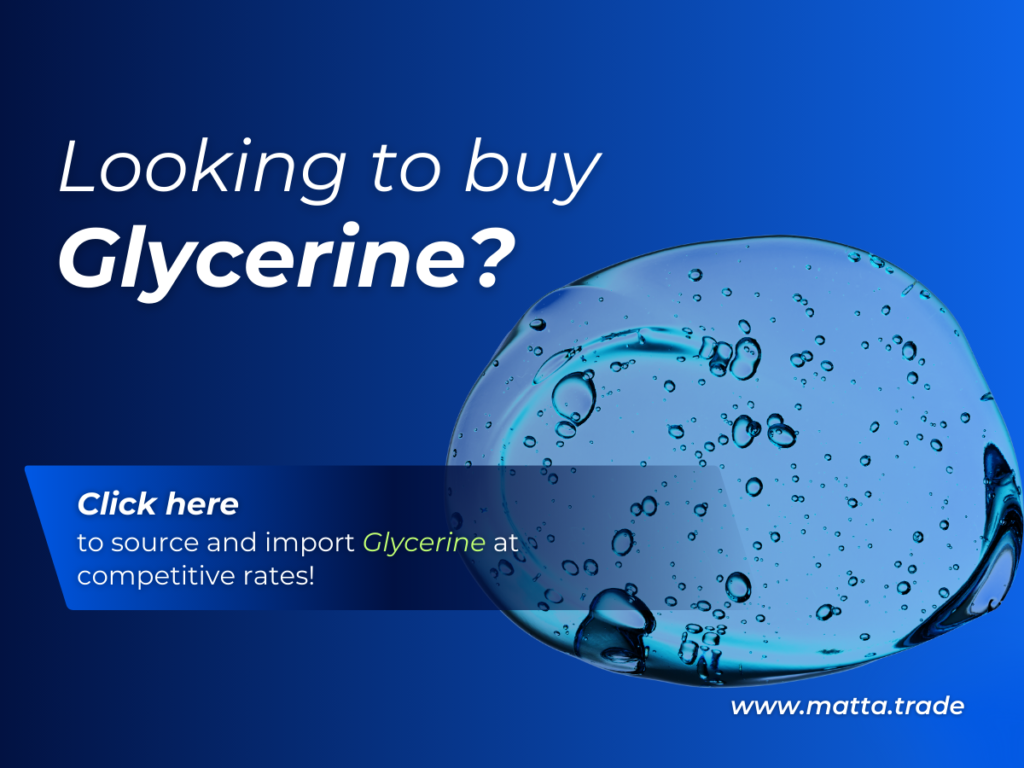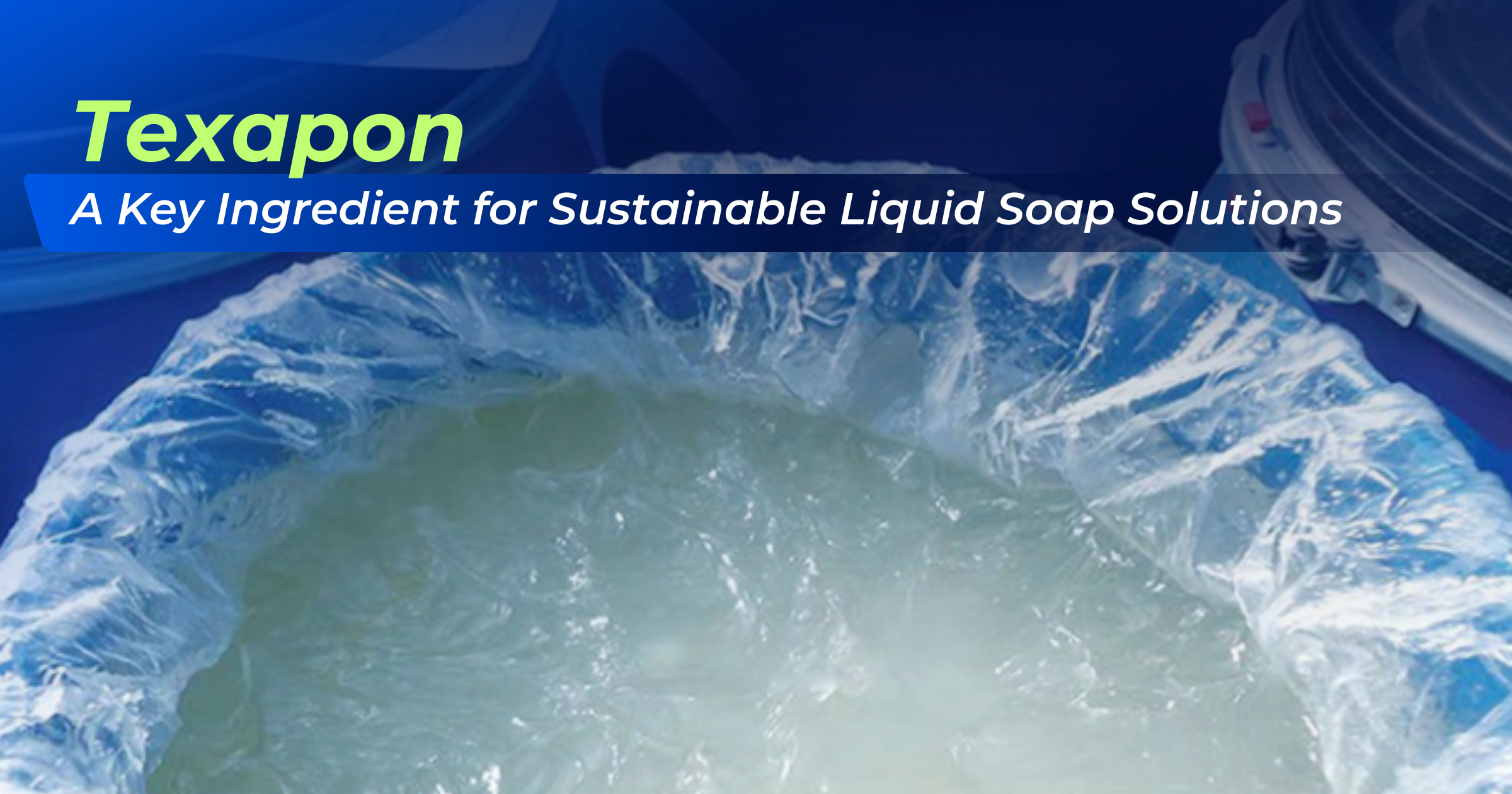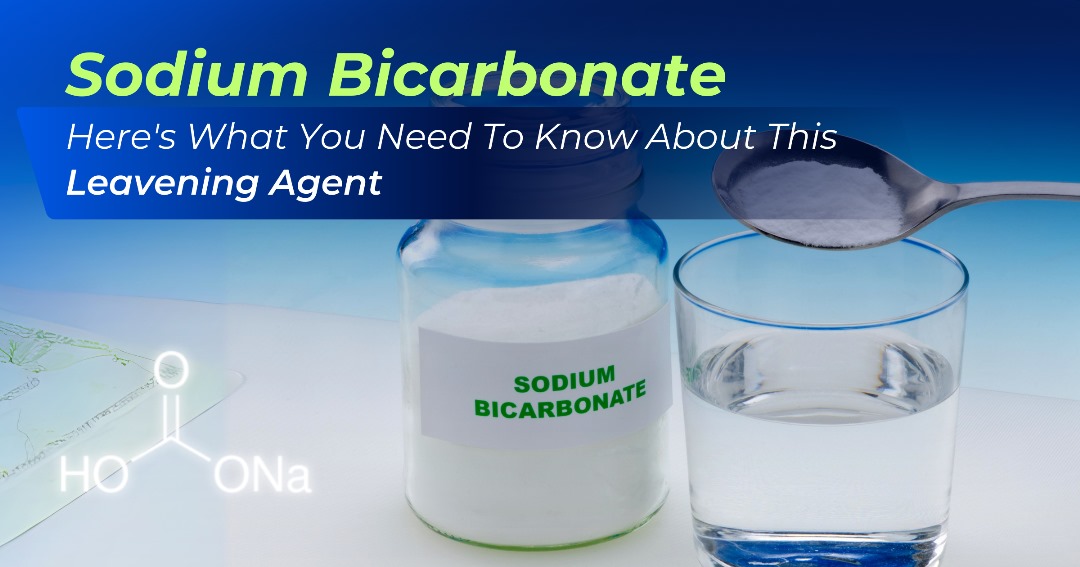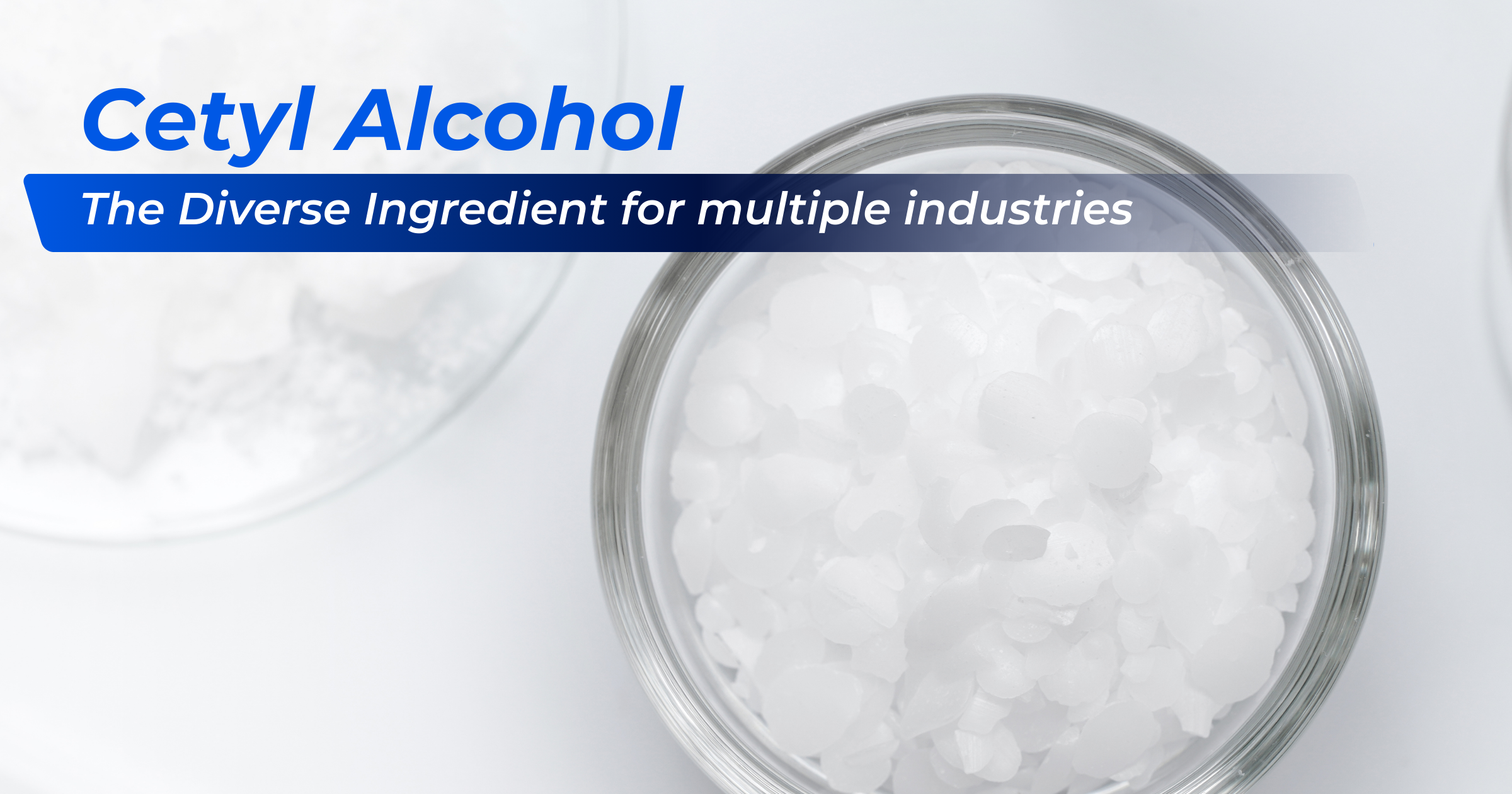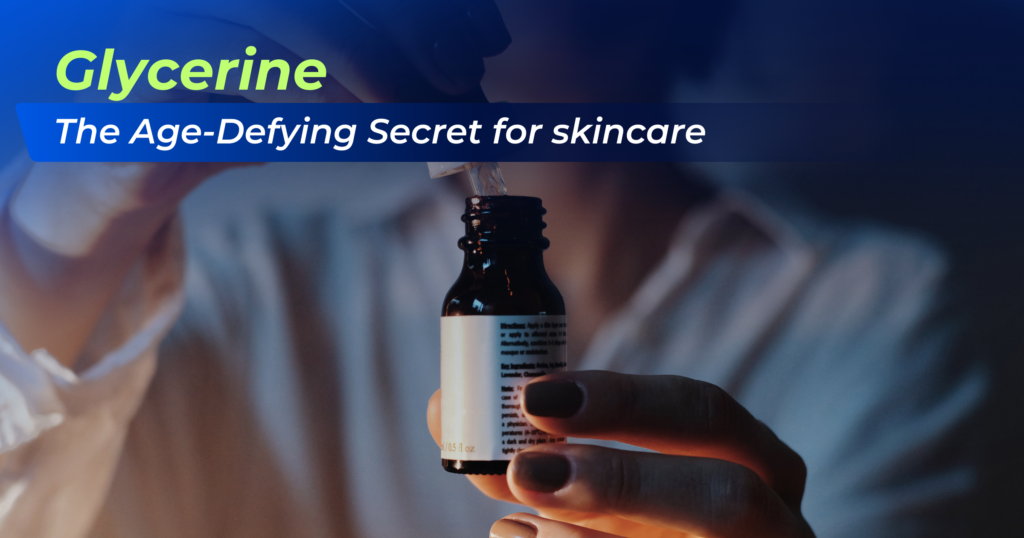
Glycerine has a long history dating back to 1779 when the Swedish chemist Carl Wilhelm Scheele first discovered it. He produced it by heating a mixture of olive oil and lead monoxide. Glycerine was later produced commercially in the 19th century as a by-product of soap manufacturing. The early applications of glycerine were mainly for use in foods, pharmaceuticals, and personal care products.
Glycerine, or glycerol, is a simple polyol compound with a colourless, odourless, viscous liquid consistency. The terms glycerine and glycerol are often used interchangeably to refer to the same chemical compound.
This chemical compound has widespread applications across many industries, including Skincare and Personal Care, Food and Beverages, Pharmaceuticals, tobacco production amidst
The versatility of glycerine stems from its unique chemical properties that make it extensively useful across formulations. Glycerine’s growth has steadily risen due to the increasing demand from diverse industries. This diverse ingredient is crucial in the making of several products.
Join us as we uncover the humble beginnings of this wonder and understand its varied applications, benefits, and so much more.
Manufacturing Glycerine
Glycerine is primarily produced as a by-product during soap manufacturing, where triglycerides (fats and oils) react with alkali hydroxides, producing crude glycerol and salts. The crude glycerol is then purified to yield commercial-grade glycerine.
Raw materials
The primary raw materials for manufacturing glycerine are natural fats like palm oil, palm kernel oil, soybean oil, and animal fats like tallow. The type of raw material impacts the quality. Vegetable oils typically produce a higher grade than animal fats. The raw materials undergo pretreatment steps like degumming and neutralisation before saponification.
Production process
There are batch and continuous production processes for glycerine manufacturing. In the batch process, the triglyceride mixes with alkali in a pressure vessel at temperatures 120-150°C, producing crude glycerol. In the continuous process, the triglyceride and alkali are pumped continuously through a series of reactors at temperatures 220-270°C at pressures 20-40 bar. The constant process allows higher production volumes.
After saponification, the crude glycerol is separated and then purified. Purification involves removing residual salts, matter organic non-glycerol matter, and water. Common methods include vacuum distillation, ion-exchange resins, membrane filtration, and chemical treatments. Distillation produces the highest grade. The refined glycerol is tested to ensure it meets quality specifications.
Quality standards
Glycerine is produced in different grades, such as crude, commercial, and dynamically refined. Crude glycerol contains 60-90% actual glycerol. Commercial or dynamite glycerol refers to semi-refined glycerine that is around 90% pure. The highest grade is dynamically refined glycerol, reaching 99.7% purity. The grades differ based on the number of residual salts, water, and organic non-glycerol matter. It is tested as per standards like the Unites States Pharmacopeia and Food Chemical Codex monographs, which specify requirements for glycerol content, chloride and sulfate salts, metals, and other parameters.
Glycerine for Skincare
Glycerine is a popular ingredient in many skincare products due to its natural humectant properties that provide numerous benefits for skin health and appearance.
Benefits for Skin
- Glycerine helps skin retain moisture and restore hydration. When applied to the skin, glycerine draws water from the air and deeper layers of the skin to keep the surface moisturized. This provides an immediate plumping effect that makes skin look smoother and softer. Glycerine can penetrate skin deeper than some humectants to provide longer-lasting hydration.
- Glycerine’s moisturizing properties also make it helpful for treating dry, flaky skin conditions like eczema. The humectant effects protect the skin and relieve itching and irritation.
- In addition, glycerine functions as an emollient by filling the spaces between skin cells to make them feel softer and appear smoother. It helps strengthen the skin’s natural barrier.
- Due to its hydrating and anti-inflammatory effects, glycerine assists with minor wound healing, burns, cuts, etc. It can quicken healing time and reduce the appearance of scars.
Glycerine Soap
Glycerine is commonly use in soapmaking. It gives soap moisturizing properties that leave skin feeling soft and smooth after washing rather than dry and tight. Glycerine soaps typically have a clear, translucent appearance.
The humectant properties of glycerine prevent moisture loss from frequent handwashing. Glycerine soap is gentle enough for those with sensitive skin conditions. It cleanses effectively without stripping the skin’s natural oils.
Glycerine for Skin Whitening
Glycerine is considered a natural skin lightener because it can remove dead skin cells through exfoliation. This gradually unveils brighter and more even-toned skin.
Glycerine’s hydrating properties also plump up the skin to make dark spots and blemishes less noticeable. When used over time, glycerine may help inhibit melanin production to prevent further darkening.
However, glycerine is very mild compared to chemical whitening agents. While it can help gently brighten dull complexions, dramatic skin lightening is unlikely.
Glycerine and Rose Water
Rose water and glycerine are popular skincare ingredients known for their hydrating and soothing properties. Together, they offer several benefits:
Moisturising: Glycerine draws moisture into the skin, while rose water enhances hydration, making this combination ideal for dry or dehydrated skin.
Soothing Irritation: Both ingredients have anti-inflammatory properties that help calm sensitive or irritated skin, offering enhanced relief when used together.
Improving Skin Texture: Glycerine softens the skin and fills cracks, while rose water smooths rough patches, leaving the skin even and supple.
Refreshing and Balancing: Rose water tones and refreshes with its antioxidant properties and floral scent, while glycerine adds lasting hydration for a bright, energized complexion.
This versatile duo works well in DIY cleansers, toners, serums, and masks, suitable for all skin types.
Applications of Glycerine
Food Applications
Glycerine is widely use in the food industry as an additive to improve the texture, sweetness, and moisture retention in various foods. Here are some critical uses of glycerine in foods:
- Baked Goods – Adding small amounts of glycerine helps retain moisture in items like cakes, cookies, and breads, keeping them soft and preventing them from drying out too quickly. This helps extend their shelf life.
- Candy Production – Glycerine is added during candy making to help bind ingredients together and act as a plasticiser. This gives candies a smooth, non-brittle texture.
- Icings and Frostings – Glycerine prevents icings and frostings from hardening and drying out by retaining moisture. It gives them a smooth, spreadable consistency.
- Beverages – Minimal amounts can enhance the body and texture of beverages.
- Meat Products – Glycerine is used as a humectant in meat processing to keep meats moist and tender. It maintains the moisture content during freezing and storage.
- Low-Fat Foods – With its moisture retention properties, glycerine can replace fats in low-fat foods while maintaining a juicy, satisfying texture.
- Sugar Substitute – Since glycerine is 60-70% as sweet as sucrose, it can replace sugar in products while partially adding humectant properties.
So, in summary, glycerine improves many foods’ taste, moisture, shelf life and texture profile. Its versatile functionality makes glycerine a widely used food additive.
Industrial Applications
Glycerine has various uses in various industries beyond personal care and food applications. Some of the major industrial applications of glycerine include:
Manufacturing Explosives, Antifreeze and More
- Glycerine is commonly used to produce explosives acting as a stabiliser and gelatinizer in explosives.
- It is a crucial ingredient for automobiles and other machinery antifreeze fluids. Glycerine lowers the freezing point of water and prevents damage from freezing.
- Glycerine is used to manufacture urethane polymers for flexible and rigid foams use in mattresses, insulation panels, cushions, etc.
- It makes surfactants for detergents, cleaners and personal care products.
- Glycerine is used to produce alkyd resins used in paints and coatings. It serves as a plasticiser.
- It finds applications in the pharmaceutical industry, drugs, cough syrups, etc.
Polymer Production
- Glycerine is a versatile feedstock for producing a variety of polymers and biochemicals through microbial fermentation.
- It can be used to make 1,3-propanediol, which is further used to manufacture polyesters, polyurethanes and other polymers.
- Glycerine is also used to produce epichlorohydrin, a compound in epoxy resins.
Other Industrial Applications
Glycerine serves as a humectant and softener in tobacco products. Also, it is used in the cement industry to reduce energy in clinker production. Furthermore, it finds applications in the paper industry, and also as a solvent in gravure printing processes.
In addition, it produces acrylic fibres and plastics like cell casting and extrusion. It uses hydraulic fluids as a viscosity stabliser.
Global Glycerine Market
To begin with, the global glycerine market reached 4.9 million metric tons in 2022, with Asia Pacific leading production, contributing 51%. China, Malaysia, and Indonesia dominate the market, leveraging biodiesel by-products. Wilmar International is the top producer, with an annual output of 1.2 million metric tons, followed by companies like Godrej Industries, Kao Corporation, and Procter & Gamble.
Glycerine prices have risen from $600 per ton in 2010 to over $800 per ton in 2022, fluctuating with supply-demand dynamics. High biodiesel production often causes oversupply, reducing crude glycerine costs. The market is expected to grow to 6.5 million metric tons by 2027, driven by demand from personal care, food, pharmaceuticals, and industrial sectors, with a CAGR of 5%.
African Glycerine Market
Africa’s glycerine market is steadily expanding, led by South Africa, Egypt, Morocco, and Nigeria. South Africa, the largest producer, exports glycerine to Europe and Asia through major companies like Sasol and Natref. Egypt and Morocco focus on domestic markets, while Nigeria’s smaller producers meet about 70% of local demand, with imports supplementing the rest.
Furthermore, the pandemic briefly slowed growth, but the African market is expected to grow at 4-6% CAGR over the next five years, with potential for greater self-sufficiency through investment in infrastructure and production capacity.
Nigeria’s glycerine production, estimated at 5,000-10,000 metric tons annually, relies on by-products from palm and soybean oils. However, challenges such as outdated technology, small-scale operations, and high energy costs limit growth.
Major Buyers: Consumer goods sectors like soaps, cosmetics, pharmaceuticals, and industries including textiles, paints, and food processing.
SWOT Analysis
- Strengths: Large market, available feedstocks, developed consumer sectors.
- Weaknesses: Low production volume, technical gaps, high costs.
- Opportunities: Import substitution, rising consumer demand, export potential.
- Threats: Import competition, infrastructure issues, policy constraints.
Overall, Nigeria has strong prospects in glycerine production and trade, if strategic investments can develop the value chain sustainably. Targeted policy support and public-private partnerships are key to the industry’s growth.
Wrapping up
Glycerin’s journey from byproduct to essential ingredient highlights the power of transformation. It’s more than just a compound—it reflects Africa’s potential to innovate and create solutions for a brighter future.
At Matta, we believe in the power of knowledge. By sharing these stories, we aim to inspire Africans to discover opportunities, turn challenges into triumphs, and build a future full of possibilities.
Together, let’s keep learning, exploring, and growing towards a sweeter tomorrow.
With warm wishes,
The Matta Team
